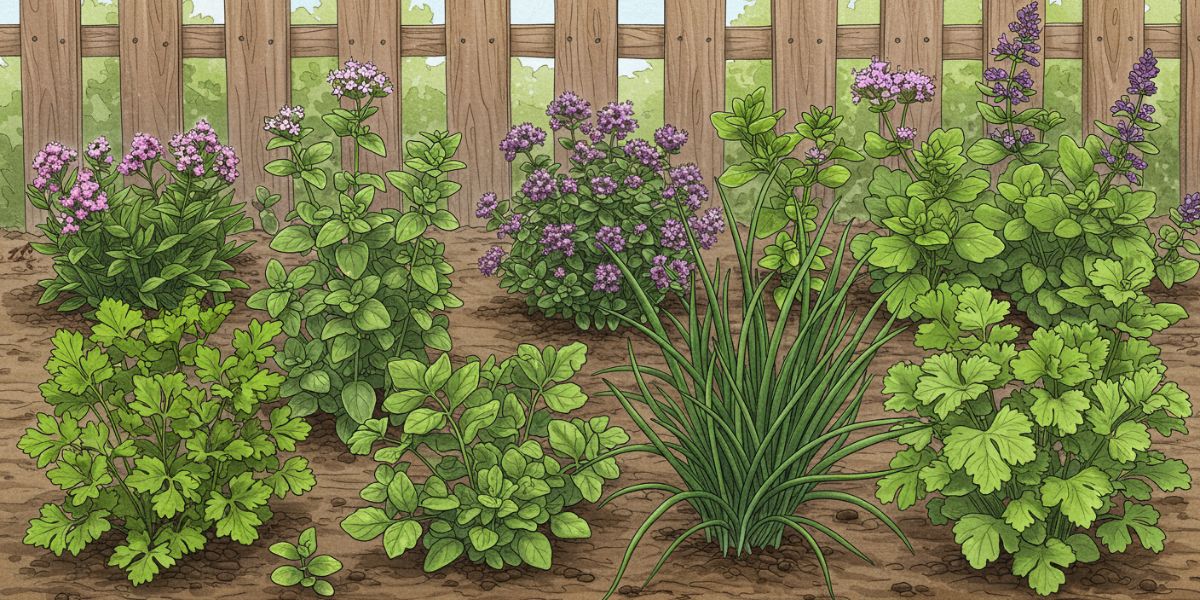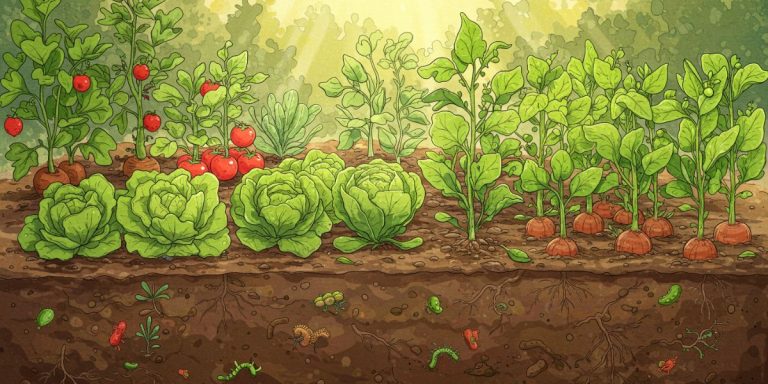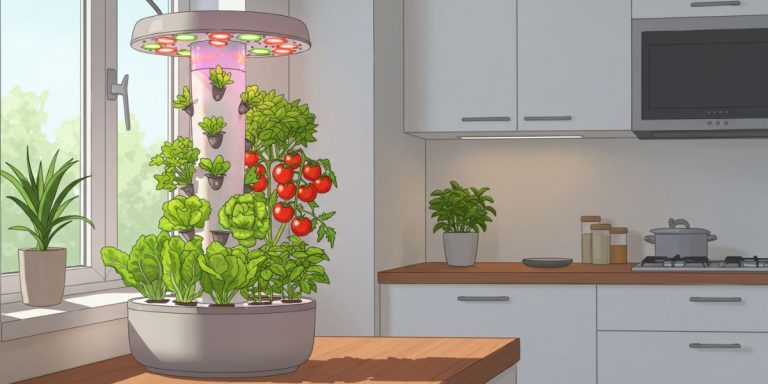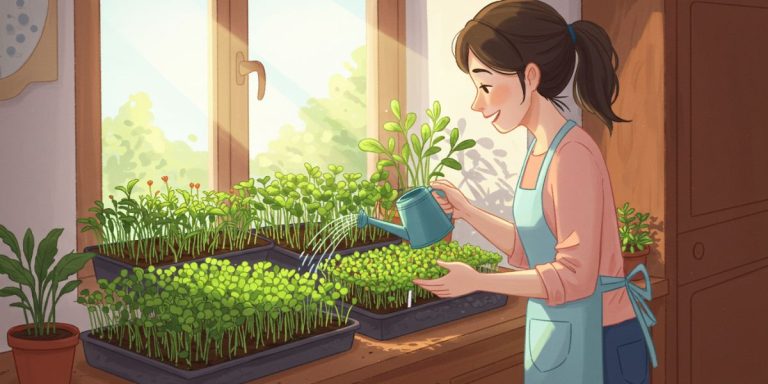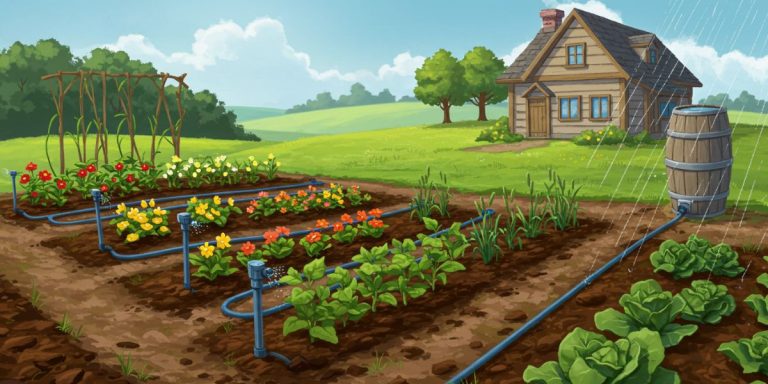6 Necessary Tips for Growing Herbs Year-Round

Growing herbs year-round is a rewarding way to enjoy fresh, flavorful ingredients no matter the season. Whether you’re looking to enhance your cooking or reduce trips to the grocery store, cultivating herbs continuously supports both sustainability and self-sufficiency. By understanding the right methods and strategies, anyone can enjoy homegrown herbs 365 days a year.
1. Choosing the Right Herbs
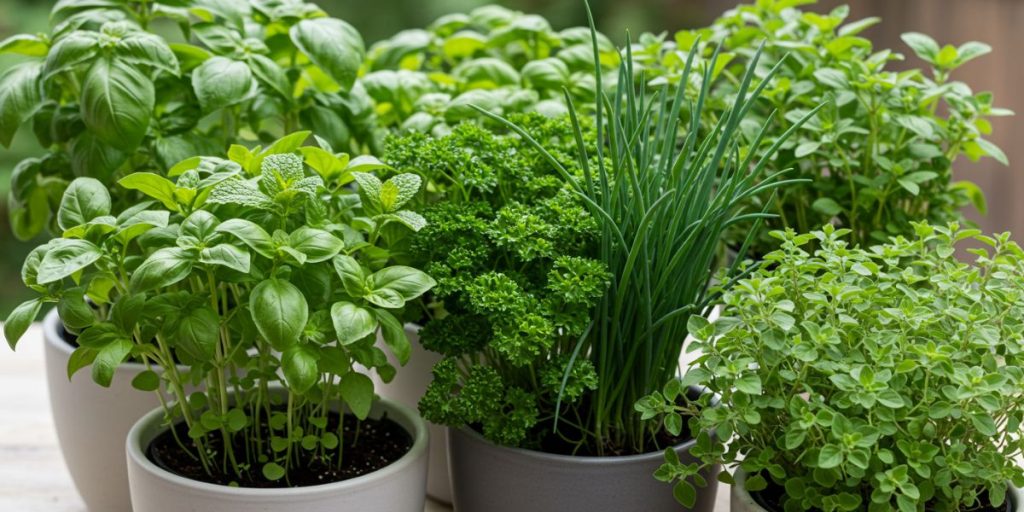
Best Herbs for Year-Round Growth
Some herbs are exceptionally suited for year-round cultivation due to their resilience and quick regrowth. Popular choices include basil, mint, parsley, chives, and oregano. These herbs can thrive in a variety of conditions and are commonly used in everyday recipes, making them versatile additions to any herb garden.
I couldn’t believe how quickly and how much volume we got from just 2 basil plants last year! It was hard to keep up with, so I handed it out whenever I got the chance!
Annual vs Perennial Herbs
It’s important to distinguish between annual and perennial herbs when planning for continuous growth. Annual herbs, like basil and dill, complete their lifecycle in one season and may require replanting or propagation. Perennial herbs such as thyme, oregano, and chives come back each year, making them ideal for long-term, maintenance-friendly herb gardens.
Herbs That Thrive Indoors vs Outdoors
Herbs like mint, basil, and parsley perform well indoors, especially near sunny windows. Outdoor herbs, such as rosemary and sage, often prefer more space and airflow, which helps reduce disease. Matching each herb to the appropriate growing environment is crucial for optimal health and productivity.
2. Indoor Strategies for Growing Herbs Year-Round
Best Locations
Indoor herbs flourish in bright, accessible spots like kitchen windowsills, south-facing windows, or special grow shelves with supplemental lighting. Consistent exposure to light—ideally 6–8 hours per day—is essential for lush, flavorful foliage. Consider vertical shelving to maximize limited space and keep herbs within reach.

Using Grow Lights Effectively
For homes that lack natural light, LED grow lights or full-spectrum bulbs provide a powerful alternative. Position lights 6–12 inches above the plants, and maintain a light schedule of 12–16 hours per day, depending on the herb variety. Proper lighting ensures strong growth, prevents legginess, and boosts essential oil production in the leaves.
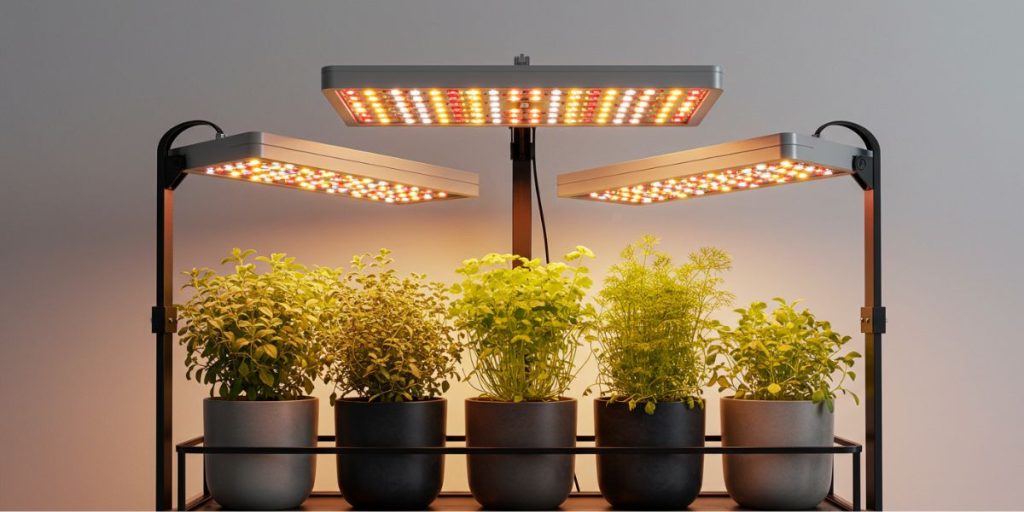
Indoor Containers and Potting Mix Choices
Use well-draining containers with adequate drainage holes to avoid root rot in indoor herbs. Opt for a light, nutrient-rich potting mix designed for herbs or vegetables. Avoid using garden soil indoors as it may compact and suffocate roots.

Watering, Humidity, and Temperature Control
Consistent watering is crucial—allow the top inch of soil to dry out between waterings to prevent over-saturation. Maintain moderate humidity levels, especially in winter, by using pebble trays or small humidifiers. Herbs generally prefer temperatures between 65–75°F, staying away from drafts or heating vents.
3. Outdoor Herb Growing Techniques
Using Cold Frames and Greenhouses
Cold frames and greenhouses extend the outdoor growing season by protecting herbs from frost and maintaining a stable microclimate. These structures allow gardeners to grow tender herbs like basil into the cooler months and start seedlings earlier in the spring. For areas with long winters, a heated greenhouse can support full-year outdoor production.
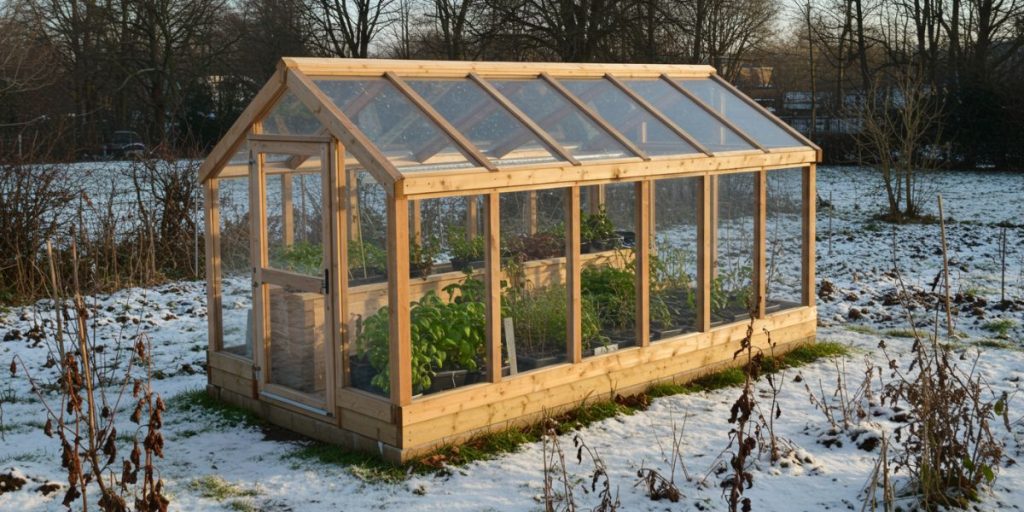
Microclimates and Winter Protection
Take advantage of microclimates—warmer spots near stone walls, patios, or south-facing fences—to shelter herbs from the cold. In colder climates, consider using row covers or frost cloths to protect plants from dips in temperature. Herbs like rosemary and thyme can survive winter outdoors with proper insulation and mulch.
Raised Beds and Mulching Practices
Raised beds provide excellent drainage, warm faster in the spring, and are easier to manage than in-ground gardens. Add mulch around herb bases in cooler months to retain moisture and regulate soil temperature. Organic mulch, like straw, leaves, or compost, also feeds the soil as it breaks down.
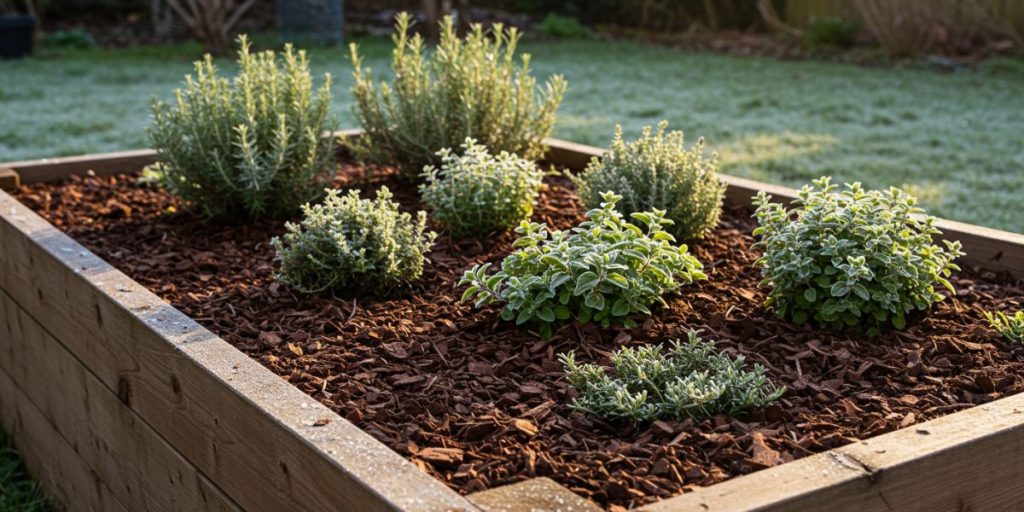
Seasonal Transitions and Overwintering Herbs
As seasons shift, bring tender herbs indoors or transplant them into containers that can be moved. Overwintering techniques, like trimming back and reducing watering, prepare herbs to go dormant without dying off. Planning for each season ensures a continuous harvest and reduces plant loss.
4. Hydroponic & Aeroponic Herb Growing
Introduction to Soilless Growing Systems
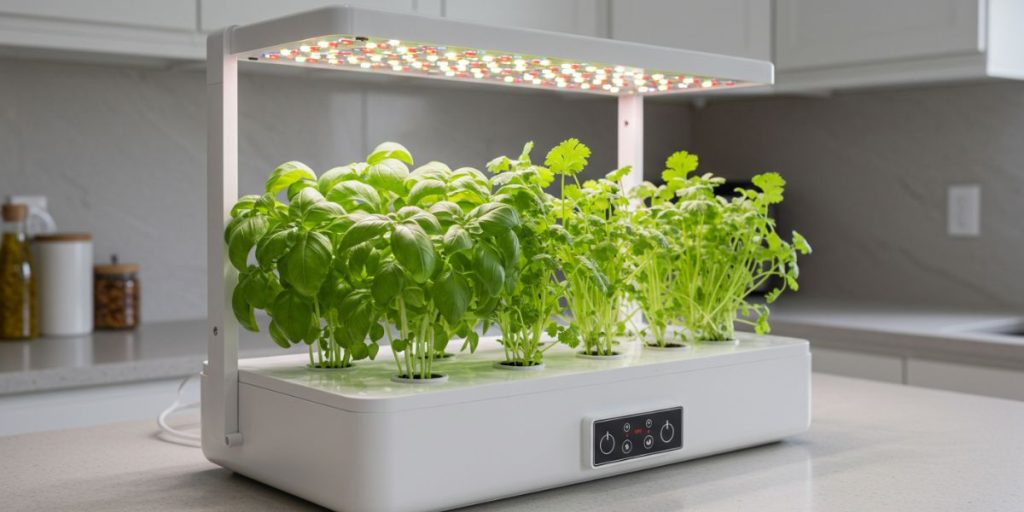
Hydroponics and aeroponics involve growing herbs without soil, using water or mist to deliver nutrients directly to plant roots. These systems offer clean, efficient alternatives to traditional growing, especially for urban gardeners or indoor enthusiasts. Because they don’t rely on seasonal soil conditions, soilless systems are ideal for growing herbs year-round.
Here’s a great budget-friendly hydroponic system to get you started.
Advantages of Hydroponics for Indoor Herbs
Hydroponics allows for faster growth, higher yield, and year-round productivity with less water use. Indoor herbs like basil, cilantro, and oregano thrive in nutrient-rich water environments. These systems also reduce pest issues and eliminate common soil-borne diseases.
Yes to no pests!
Recommended Systems for Beginners
Beginner-friendly systems like Kratky jars, deep water culture (DWC), and tower gardens are easy to set up and maintain at home. Many kits come with automated lights and timers, simplifying the process. Start small with compact systems and expand as your confidence grows.

Nutrient Management and Light Requirements
Herbs in hydroponic or aeroponic setups need balanced nutrient solutions tailored to leafy greens and culinary plants. Monitor water pH and nutrient levels regularly to avoid deficiencies. Ensure lights provide enough intensity and spectrum for herb growth—typically 14–16 hours daily.
Related post: If you like learning about growing herbs year-round, you also may be interested in year-round gardening for all your favorite fruits and veggies.
5. Maintenance and Harvesting Tips When Growing Herbs Year-Round
Regular Pruning for Continuous Growth
Frequent harvesting and pruning encourages herbs to grow bushier and produce more leaves. For most varieties, cut above a node (set of leaves) to stimulate new growth. Avoid removing more than one-third of the plant at once to maintain its strength.

Pest Prevention and Disease Control
Indoor herbs are less prone to pests, but issues like aphids, fungus gnats, and powdery mildew can still appear. Monitor plants regularly and use organic pest treatments like neem oil or insecticidal soap when necessary. Outdoors, attract beneficial insects and rotate plants to avoid recurring problems.
Insider info on neem oil: Oh my goodness…it stinks! Works well, but your nose is going to be mad.
How to Propagate Herbs for Ongoing Supply
Propagation through cuttings or division helps maintain a constant supply of herbs without needing new seeds. Herbs like mint, oregano, and basil root easily in water or moist soil. Regular propagation replenishes stock and makes for great gift plants.

Tips for Storing Excess Harvest
When you harvest more than you can use, preserve herbs through drying, freezing, or infusing into oils or vinegars. Store dried herbs in airtight containers in a cool, dark place for maximum flavor retention. Frozen herb cubes in olive oil also make convenient seasoning for cooking.

6. Common Mistakes to Avoid
Overwatering or Underwatering
One of the main pitfalls in growing herbs year-round is improper watering. Overwatering can lead to root rot, while underwatering stunts growth and reduces flavor. Always check soil moisture and tailor watering to the specific needs of each herb.

Poor Lighting or Airflow
Herbs grown indoors suffer without enough light. Use grow lights as needed and ensure good air circulation to prevent mildew and disease. Outdoors, proper spacing allows airflow and prevents leaf overcrowding.
Choosing the Wrong Herb Varieties
Not all herb varieties are well-suited to indoor or overwinter growing. Select dwarf or compact types for container growth, and choose hardy perennials for colder zones. Match the plant to your environment to reduce frustration.
Ignoring Seasonal Needs
Each herb has its own seasonal sensitivities. Pay attention to temperature, light hours, and humidity preferences as they change through the year. Adapting your care approach seasonally will keep your herbs thriving.
Conclusion
Growing herbs year-round offers a consistent supply of fresh flavor, improves food independence, and reduces waste. Whether you’re cultivating herbs on a sunny windowsill, in a greenhouse, or through hydroponics, the methods are adaptable and rewarding. Embrace the process, experiment with different setups, and enjoy the satisfaction of harvesting your own herbs no matter the season.

